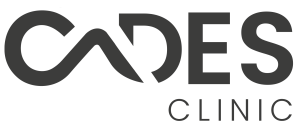Protruding teeth, more commonly referred to as buck teeth or an overbite, aren’t only unsightly; they may also lead to significant health concerns.
Buck teeth often result from stunted lower jaw growth, often as the result of child habits like thumb sucking and prolonged use of pacifiers past age 3. They may also be hereditary.
Dental Braces
Dental braces have long been considered the gold standard in treating malocclusions such as buck teeth. These orthodontic appliances use continuous light pressure to gradually shift teeth back into alignment over time, either permanently or temporarily depending on personal preference and the state of your teeth. Brackets affixed to each tooth are connected by colorful wire threaded between them to form an arch wire which tightens periodically causing a light force that slowly shifts the teeth.
Overbites can bring with them serious health problems, including gum disease, difficulty chewing or speaking, jaw issues and facial deformity. Surgery may even be required in extreme cases. Buck teeth can impact self-esteem negatively while hindering speech; finding their root causes and treating them may help alleviate these symptoms.
Invisalign
Invisalign can often help correct buck teeth, though it may not be appropriate in every instance. However, Invisalign remains an attractive solution for people seeking a noninvasive way to straighten their teeth without braces or other aggressive approaches.
Protruding front teeth, commonly referred to as an overbite or overjet, are an issue for adults and children alike. An overbite or overjet may lead to low self-esteem as well as issues with eating or breathing that require treatment – otherwise they will only worsen over time if untreated.
People with protruding teeth tend to inherit this trait; or have bad habits like thumb sucking or tongue thrusting that prevent their front teeth from aligning properly.
Invisalign can correct most dentally caused overbites, while severe ones may require surgery by a maxillofacial surgeon. This involves shifting back the upper jaw bones or moving the lower jaw forward as necessary – or sometimes simply extracting premolars to make space.
Surgery
If your severe overbites are causing discomfort or impairing your appearance, surgery could be the right decision for you. A specialist orthodontist will be able to assess whether surgery would be beneficial; surgery itself is invasive and will require recovery time afterwards.
Overbites can have serious repercussions, from hindering speech to gum issues and even skeletal discrepancies. Therefore, early treatment for overbites should be sought to avoid additional complications.
Some overbites can be treated using orthodontic appliances and dental guards from a dentist, while a mouth guard may help stop thumb sucking or tongue thrusting. Dental bonding, which is a cosmetic procedure designed to close gaps between teeth and make them appear longer, may also help correct misalignments; however, dental bonding cannot correct misalignments caused by thumb sucking and tongue thrusting. Therefore, it’s crucial that treatment be sought from a specialist orthodontist as soon as possible for effective solutions against overbites and buck teeth issues.
Tooth Extraction
Protruding upper front teeth, commonly referred to as an overbite or an “overjet,” aren’t comfortable or attractive. While they may have originated as the result of thumb-sucking or other childhood habits, protruding upper front teeth may develop into permanent issues as you age.
While it is usually corrected during childhood with braces, some adults still find their jaw shape and genetic potential impacting them as adults – however it is never too late to correct these problems with dental braces and retainers.
Before performing a tooth extraction, your dentist will numb the area using local anesthetic. They’ll use a small gutter of bone as an application point for instruments used to widen and extract the tooth, before irrigating with saline solution and prescribing pain medications if necessary; please be sure to follow all directions given but if they do not appear to help call their office.
Disclaimer: The content on this blog is intended for general informational purposes only. It is not a substitute for professional medical advice, diagnosis, or treatment. Always consult qualified healthcare providers for personalized advice. Information regarding plastic surgery, dental treatment, hair transplant, and other medical procedures is educational and not a guarantee of results. We do not assume liability for actions taken based on blog content. Medical knowledge evolves; verify information and consult professionals. External links do not imply endorsement. By using this blog, you agree to these terms.





